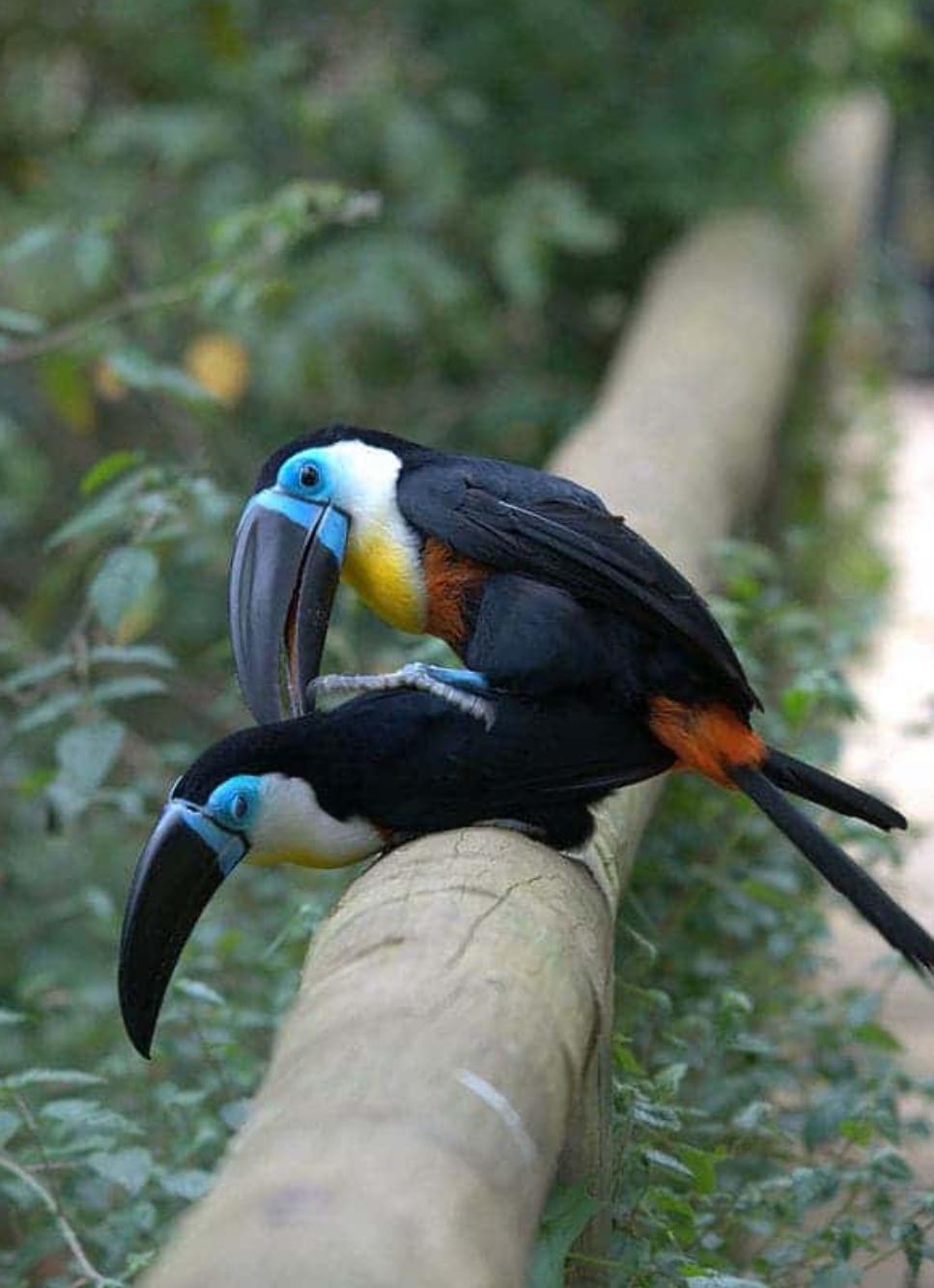
In the steamy, sun-dappled canopies of Central and South America, a vibrant drama unfolds—an erotic ballet of oversized beaks, high-stakes fruit tossing, and relentless pursuit of feathered fornication.
Behold… the toucan.
A Colorful Casanova
With a beak that looks like it was designed by a psychedelic fever dream and a mating strategy that involves tossing fruit as foreplay, the toucan is Mother Nature’s answer to, “What if a kazoo was sexy?”
There are over 40 species of toucan, all of whom look like they’ve been styled by a tropical fashion influencer. Most notably, the Toco Toucan—with its massive orange bill—is the leading man of this jungle soap opera.
Courtship: The Fruit Toss of Passion
When love is in the air (usually at the onset of the dry season), the male toucan initiates the ritual of seduction not with a song, but with… fruit.
Yes, in an act of gallant affection, he lobs berries, figs, or other tropical snacks toward his would-be lover. If she catches the fruity offering in her beak—and does not immediately pelt him back in disgust—it’s on. The avian equivalent of “Netflix and chill” begins in earnest.
Sometimes, the fruit toss escalates into a full-on beak duel. Is it flirtation? Is it fencing? Is it both? Yes.
The Deed Itself: A Blink-and-You-Miss-It Tango
Now, toucans don’t “do it” in the way you might expect for birds so flamboyant. There’s no acrobatic mid-air display, no thunderous wingbeats or coital squawks. It’s… quick. So quick, in fact, that by the time you’ve said “touca—” they’ve already gone to smoke a post-coital mango leaf.
The birds balance delicately on branches in the high canopy, where privacy is scarce but ambition is high. The male mounts briefly. There is touching. There is a subtle wing flutter. Then, silence… except for the sound of another fruit being thrown at someone else.
Eggcellent Aftermath: The Nursery of the Treehole
Once impregnated, the female lays 2 to 4 white eggs in a tree cavity—a sort of jungle studio apartment with no furniture and a suspicious smell.
For about 16–20 days, the parents take turns incubating the eggs, regurgitating fruit and insects to feed the hatchlings once they emerge. The chicks are born blind, naked, and as helpless as a tourist in the Amazon with no Wi-Fi. They remain in the nest for up to 8 weeks, their massive beaks slowly developing like awkward teenage noses.
Geography of the Passion
Toucans are found throughout the lush rainforests of Central and South America—from southern Mexico down to northern Argentina. They favor elevations up to 6,200 feet and are typically seen in pairs or small flocks, often swapping gossip and bananas.
Their natural predators include snakes, jaguars, and jealous parrots. Despite their flashy appearance, toucans are surprisingly nimble and rarely caught. It’s all that cardio from fruit duels.
Horny But Helpful
Beyond their romantic escapades, toucans play a crucial ecological role as seed dispersers. Every time they poop, they’re planting tomorrow’s rainforest. Their love life literally grows trees.
So next time you see a toucan, remember: behind that goofy bill is a creature of great sensual energy, ecological importance, and impeccable aim when flinging passion fruit.
In the words of this very aroused narrator:
“And thus, in the treetop boudoirs of the jungle, life—messy, feathered, and deeply erotic—finds a way.”